Delivering Perfection: The Quality Control Advantage
Implementing strong quality assurance protocols at each project milestone is a crucial step in delivering refined and flawless products. By strategically incorporating quality control procedures, we can detect and address defects early in the process, ultimately obtaining stakeholder satisfaction.
Iyanna Trimmingham
9/29/20233 min read


Quality control (QC) has firmly established itself as a fundamental pillar across all industries. The implementation of effective quality control and review processes plays a pivotal role in ensuring that errors, inconsistencies, and areas for improvement are identified before delivering the final product to stakeholders or clients. This approach not only yields impeccable final products that leave a lasting impression but also significantly enhances your reputation as a provider of excellence.
Imagine yourself as a dedicated project manager. Your mission: to successfully deliver a critical project to a high-profile client. The deadline looms large, and the stakes are even higher. It's a scenario that every project team encounters at some point.
You and your team have invested considerable effort and dedication into this project, working tirelessly to ensure that it not only meets but surpasses all expectations. As the delivery date approaches, your confidence in the quality of your work is high, but you also recognize the importance of one final step: quality control (QC) and final review.
But what exactly is quality control, and why is it such a vital component of project success?
Defining Quality Control


Quality control, or QC, is the meticulous process of ensuring that your deliverables align perfectly with the project's requirements and standards. It encompasses a range of activities, including:
Reviewing deliverables to confirm they meet project requirements and specifications.
Rigorously testing the deliverables to ensure they function precisely as intended.
Identifying and rectifying any errors or defects that may have crept in during the development process.
Verifying that the deliverables are not only complete but also ready for seamless delivery to the client.
The Significance of Quality Control
Now, why should you bother with quality control?
Quality control serves several key purposes:
Client Satisfaction: Above all, it ensures that your deliverables meet or exceed the client's expectations, which is crucial for maintaining a satisfied and trusting client relationship.
Cost and Time Savings: Effective quality control can save you from costly delays and the dreaded rework that comes with subpar deliverables.
Reputation Management: Your business's reputation hinges on delivering quality products or services consistently. Effective QC safeguards that reputation.
Enhanced Overall Quality: By making QC a standard practice, you contribute to elevating the overall quality of your products or services, setting a higher standard for your team and organization.
Now, let's delve into when and how to implement quality control effectively.
When to Perform Quality Control
QC should be an ongoing process throughout the project life cycle, from initial planning to final delivery. However, there are two key stages where it takes center stage:
During Development: Regular QC checks during development ensure that your deliverables stay on the right track, meeting all requirements and standards.
Before Final Delivery: Just before delivery, conduct a final QC review to catch any remaining issues, guaranteeing that your deliverables are polished and ready for client acceptance.
The Dream Team for Quality Control


Who should be involved in the quality control process? It's a team effort, involving:
Project Manager: To oversee the entire QC process and ensure alignment with project objectives.
Project Team Members: Those directly involved in the project who can spot issues from a technical perspective.
Subject Matter Experts: Bringing their specialized knowledge to ensure every aspect meets industry standards.
Clients: Their input is invaluable as they provide a fresh perspective and the ultimate seal of approval.
Strategies for Effective Quality Control
To make QC work seamlessly, consider these strategies:
Craft a Comprehensive QC Plan: Your QC plan should outline specific activities and responsibilities for each stakeholder, ensuring everyone knows their role in ensuring quality.
Utilize Diverse QC Techniques: Inspections, audits, testing, and reviews all play a role. A mix of techniques provides a holistic view of your deliverables' quality.
Engage Stakeholders Early: Involving stakeholders at the onset of QC ensures alignment with project requirements and standards, catching issues early for swift resolution.
Leverage QC Tools and Software: Various tools, from checklists to testing systems, can streamline the QC process and automate tasks, making it more efficient.
Effective quality control and final review processes are indispensable for delivering flawless, top-notch project outcomes. By applying the strategies and tools outlined here, you can rest assured that your deliverables will consistently meet or exceed client requirements and standards. When you consistently deliver excellence, you build trust, cement your reputation, and pave the way for future successes.

